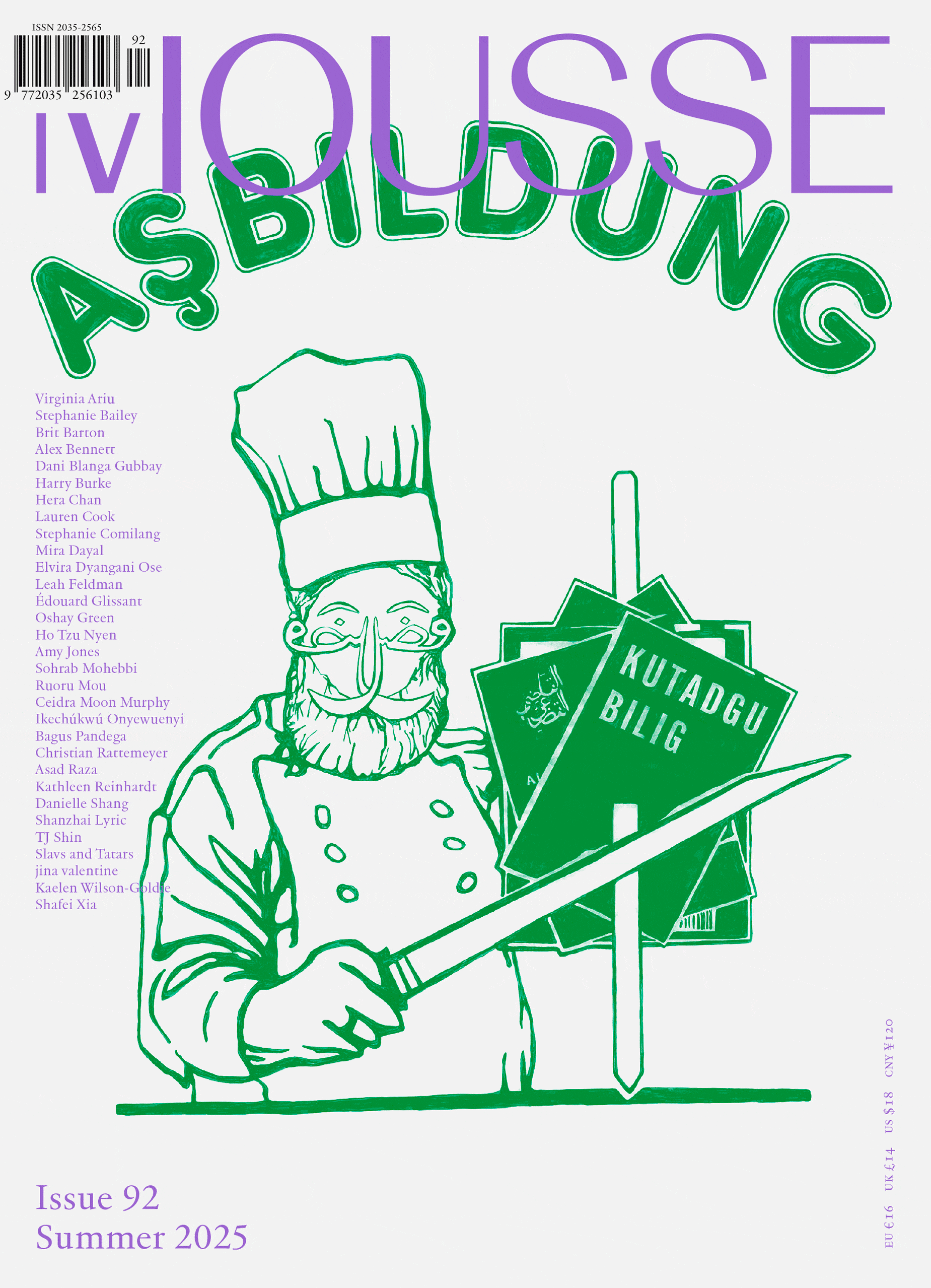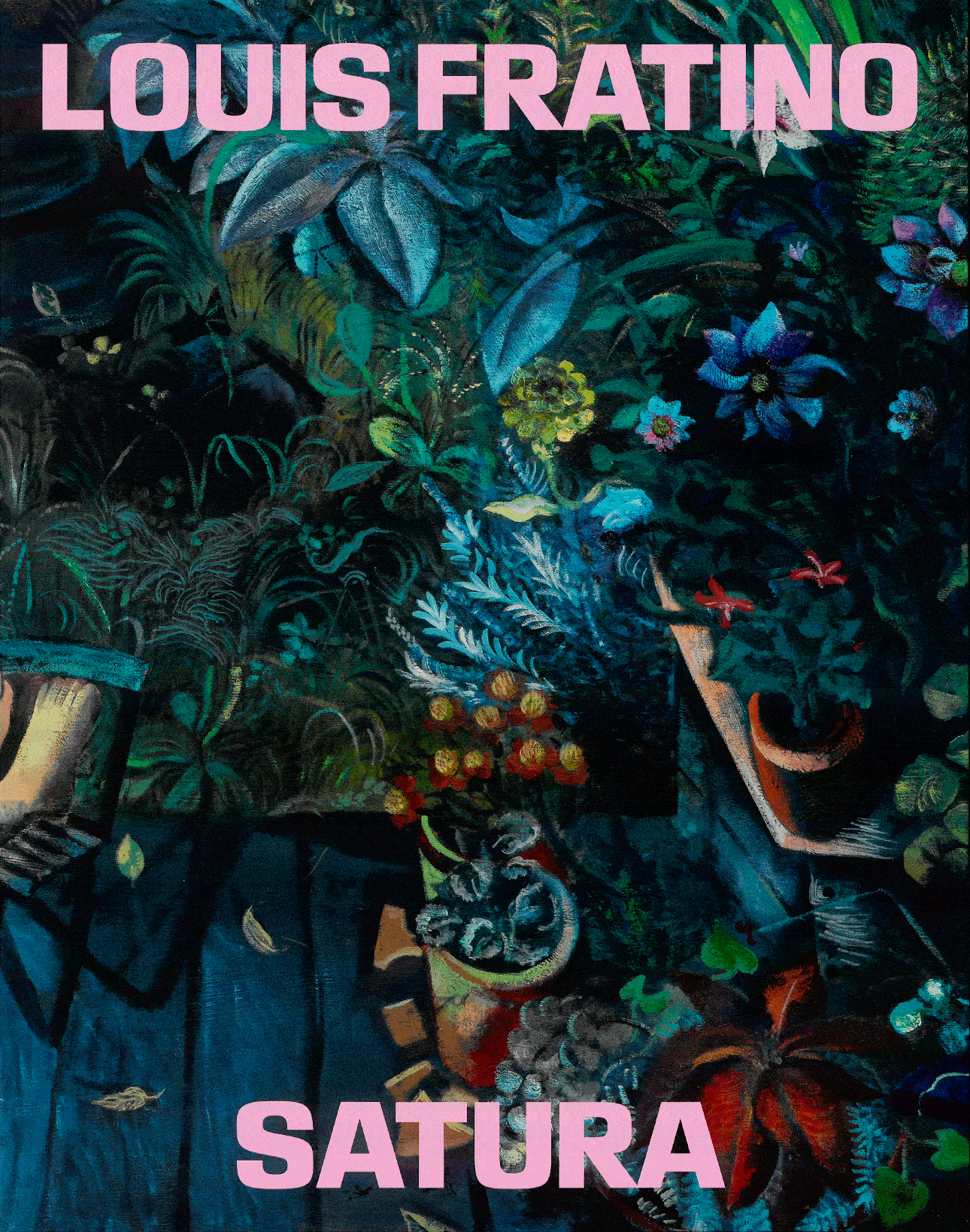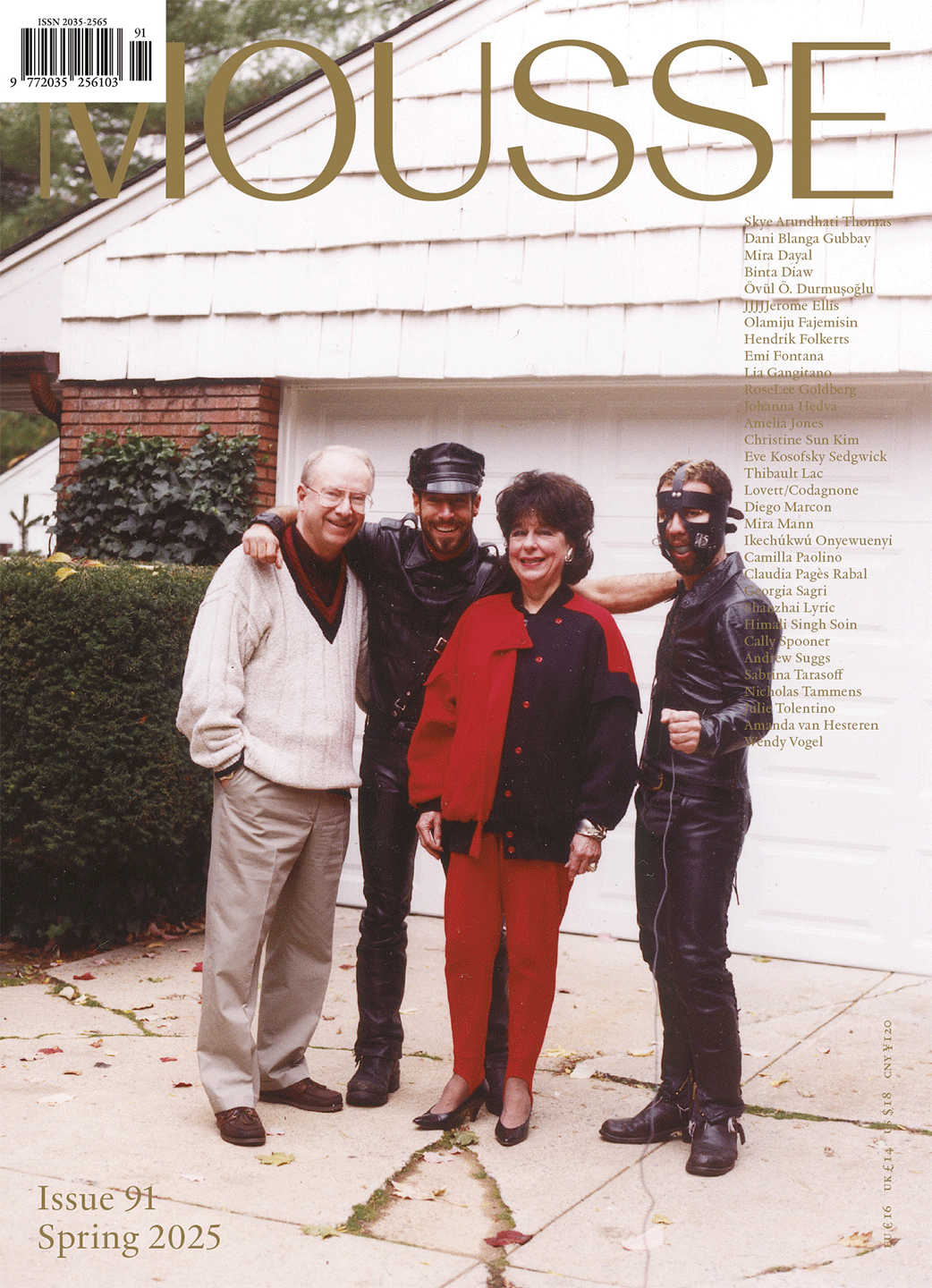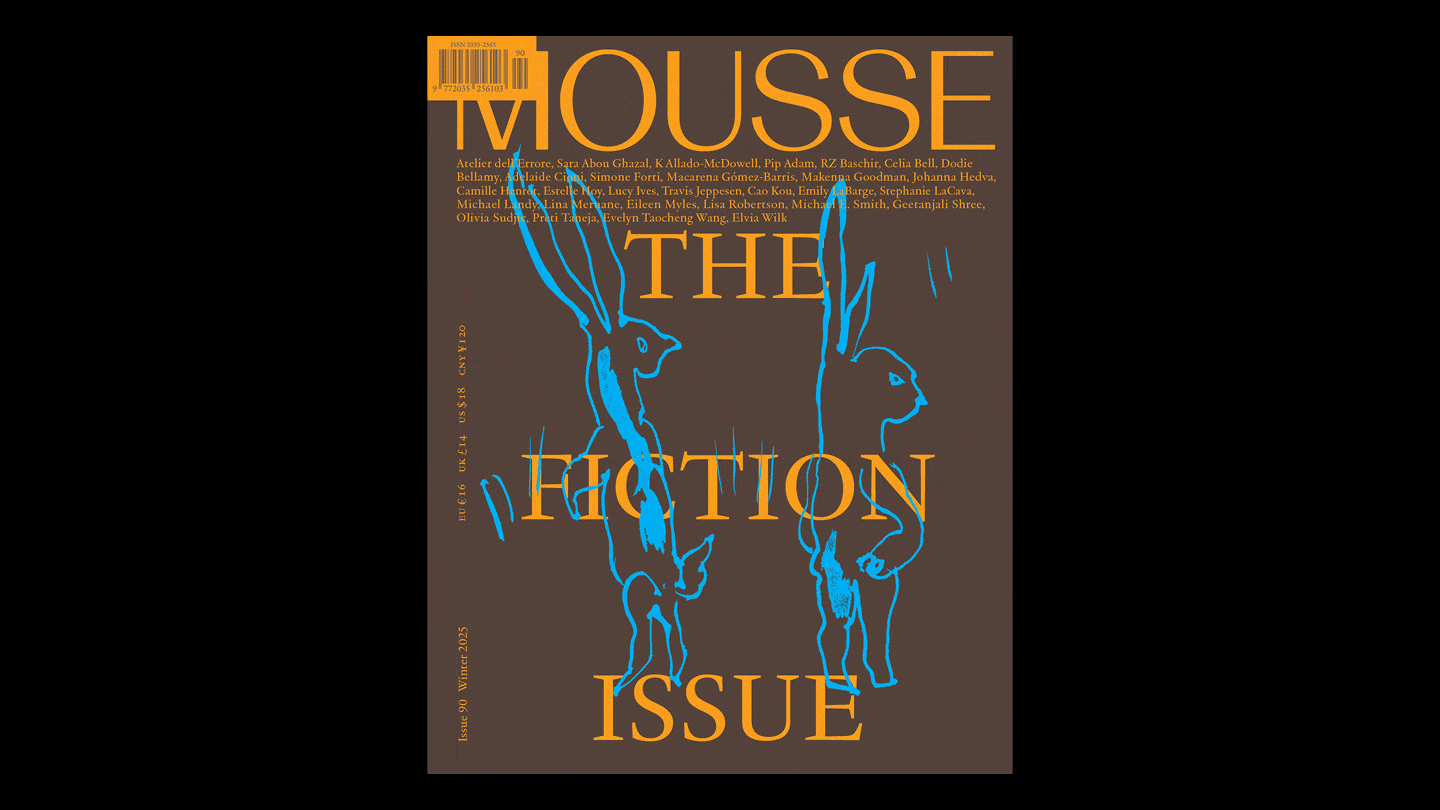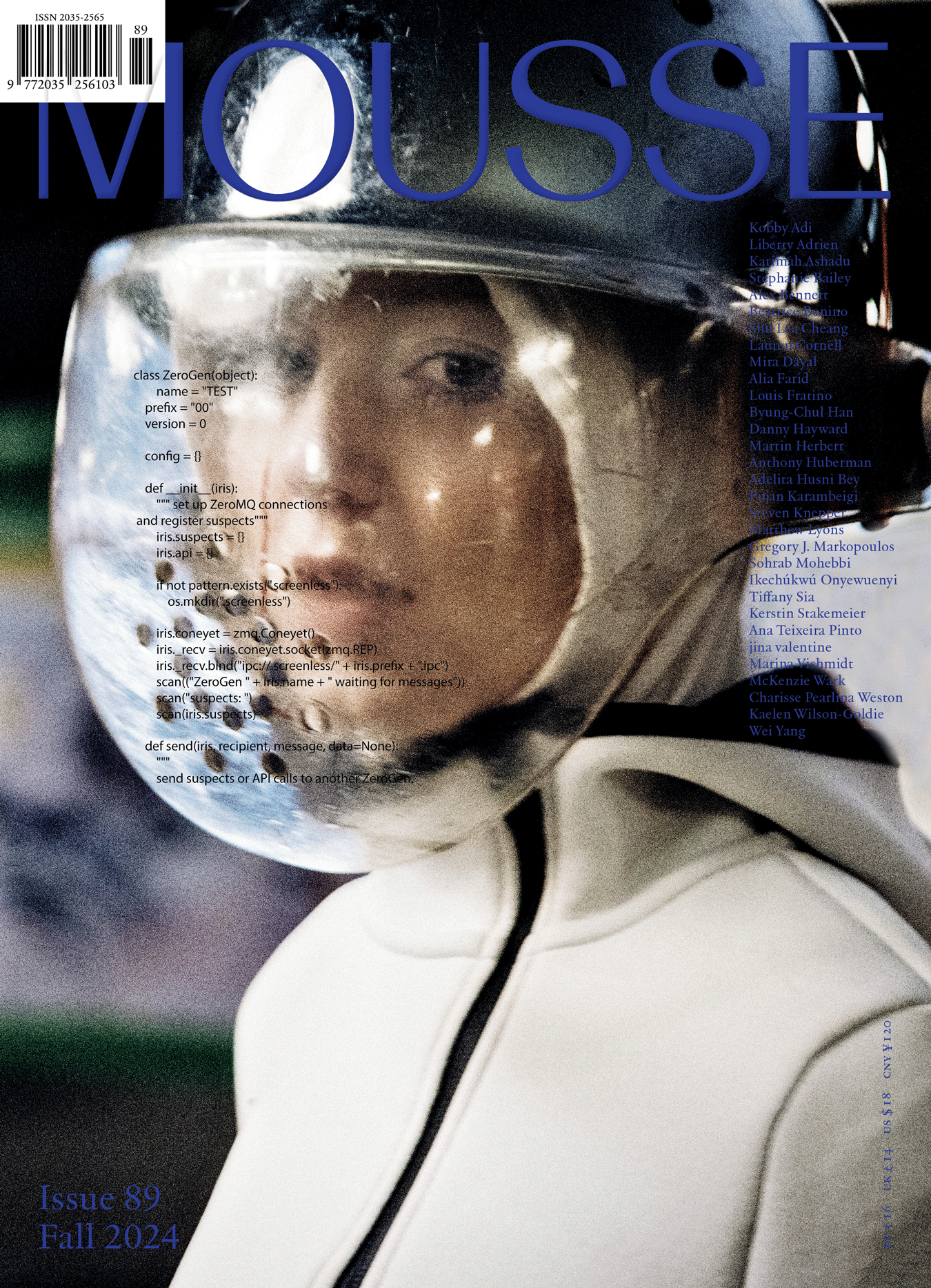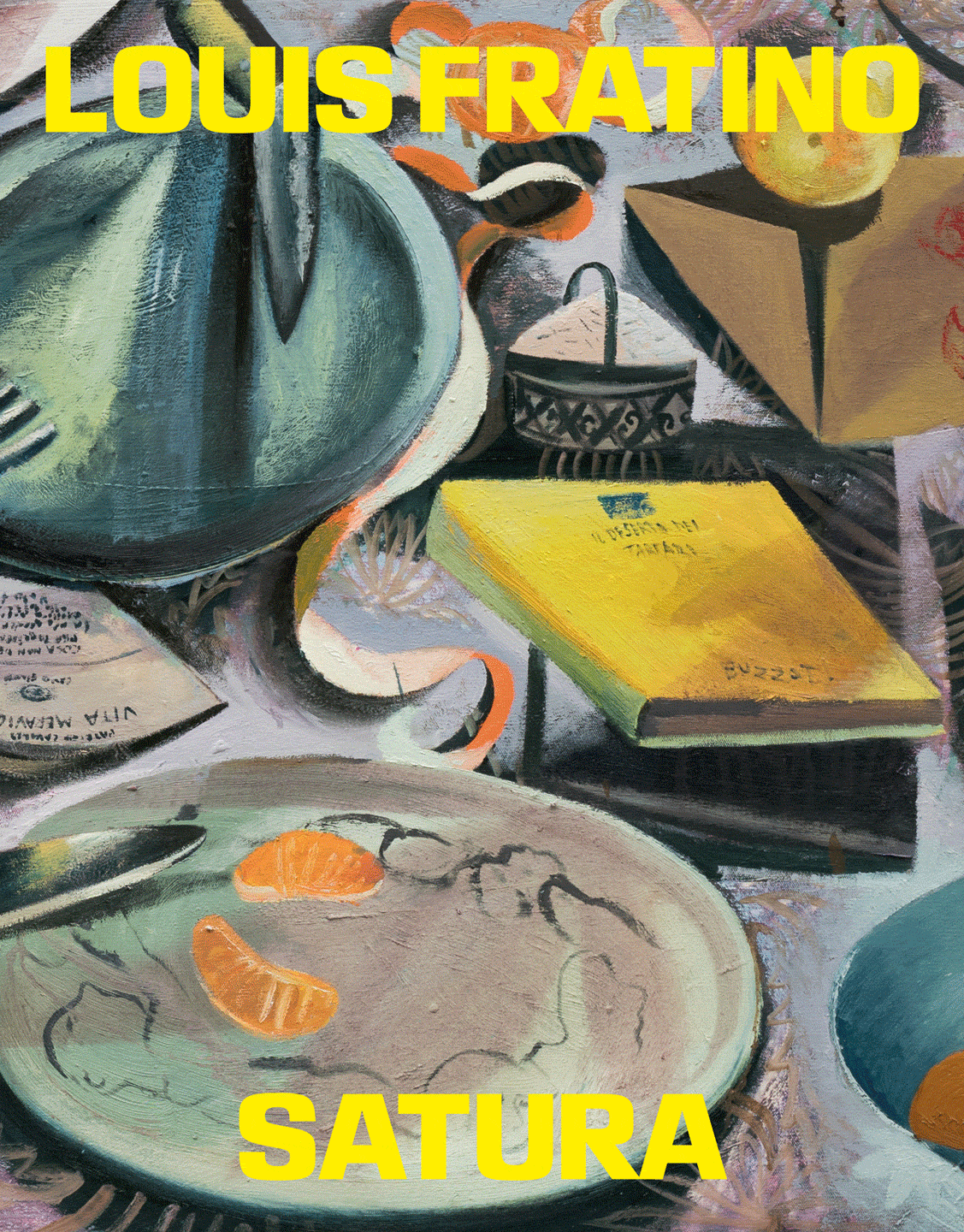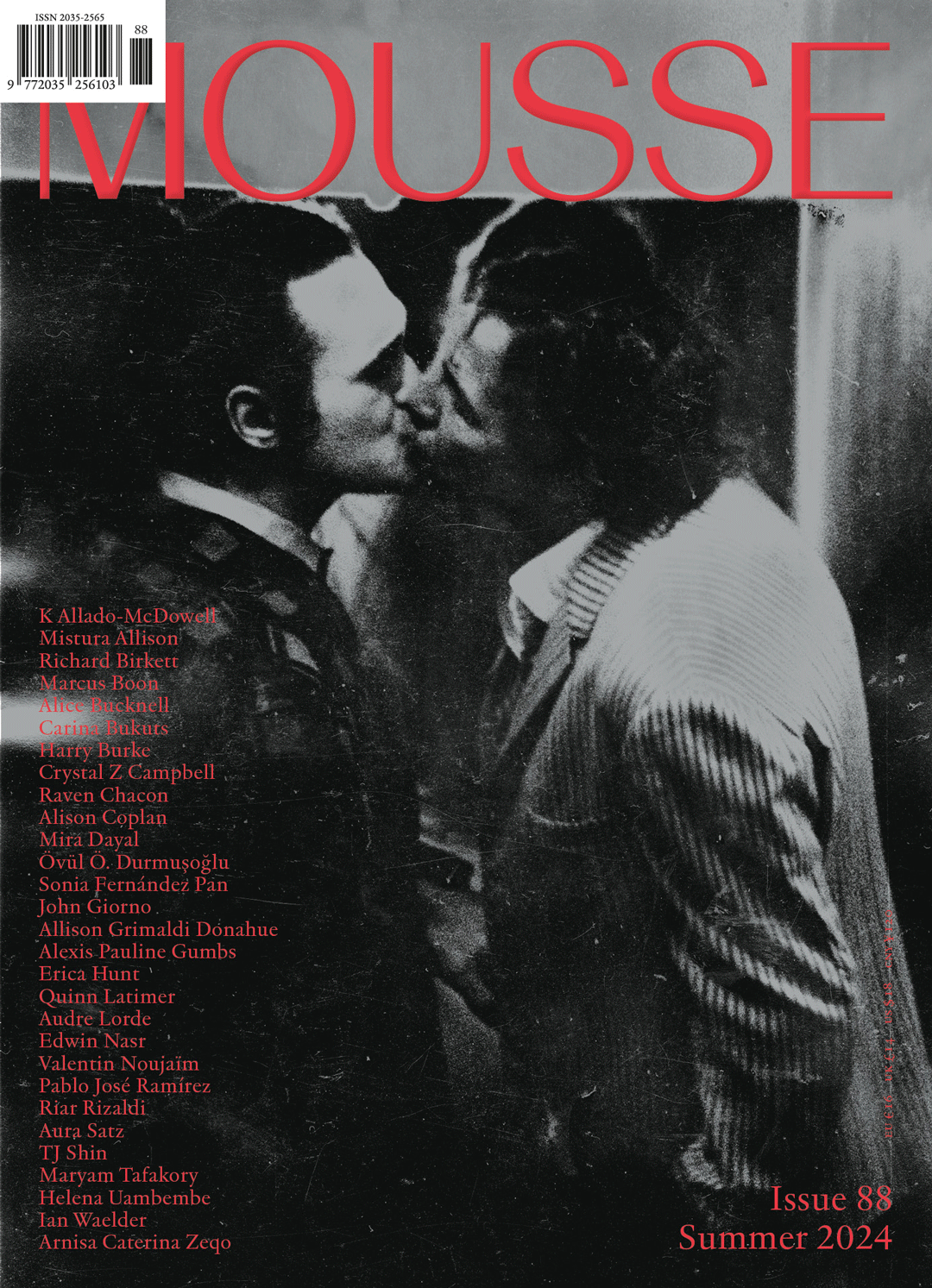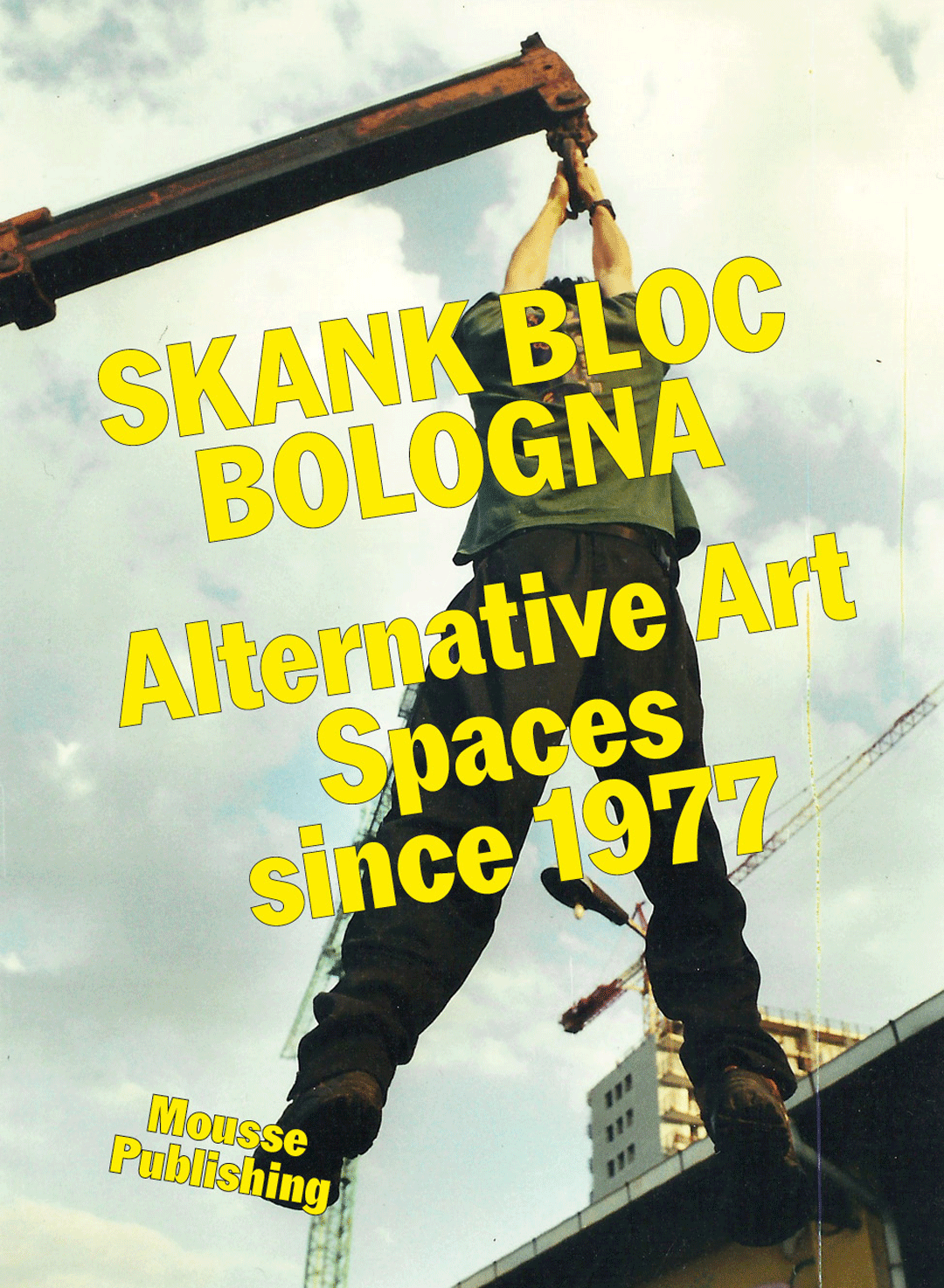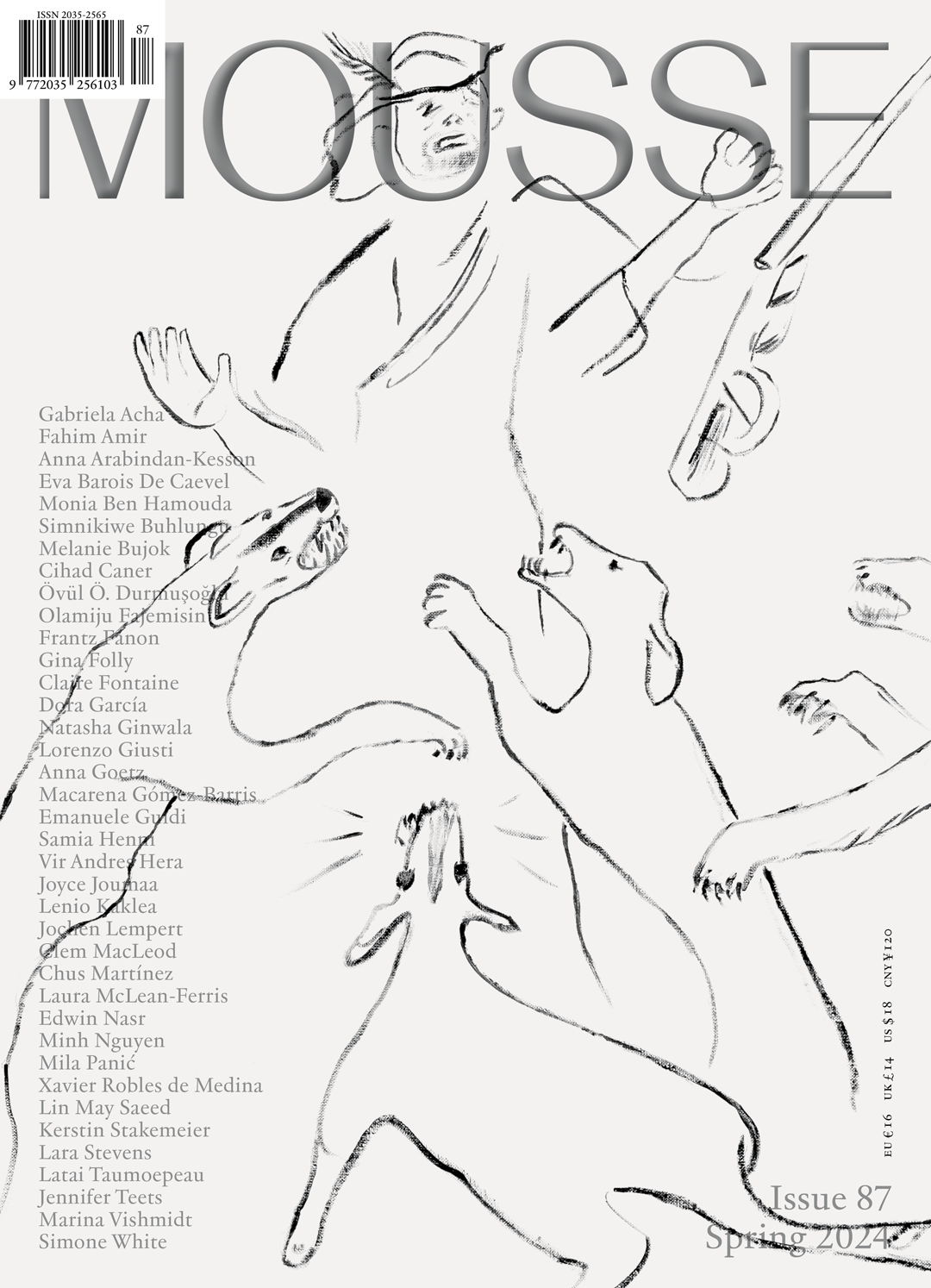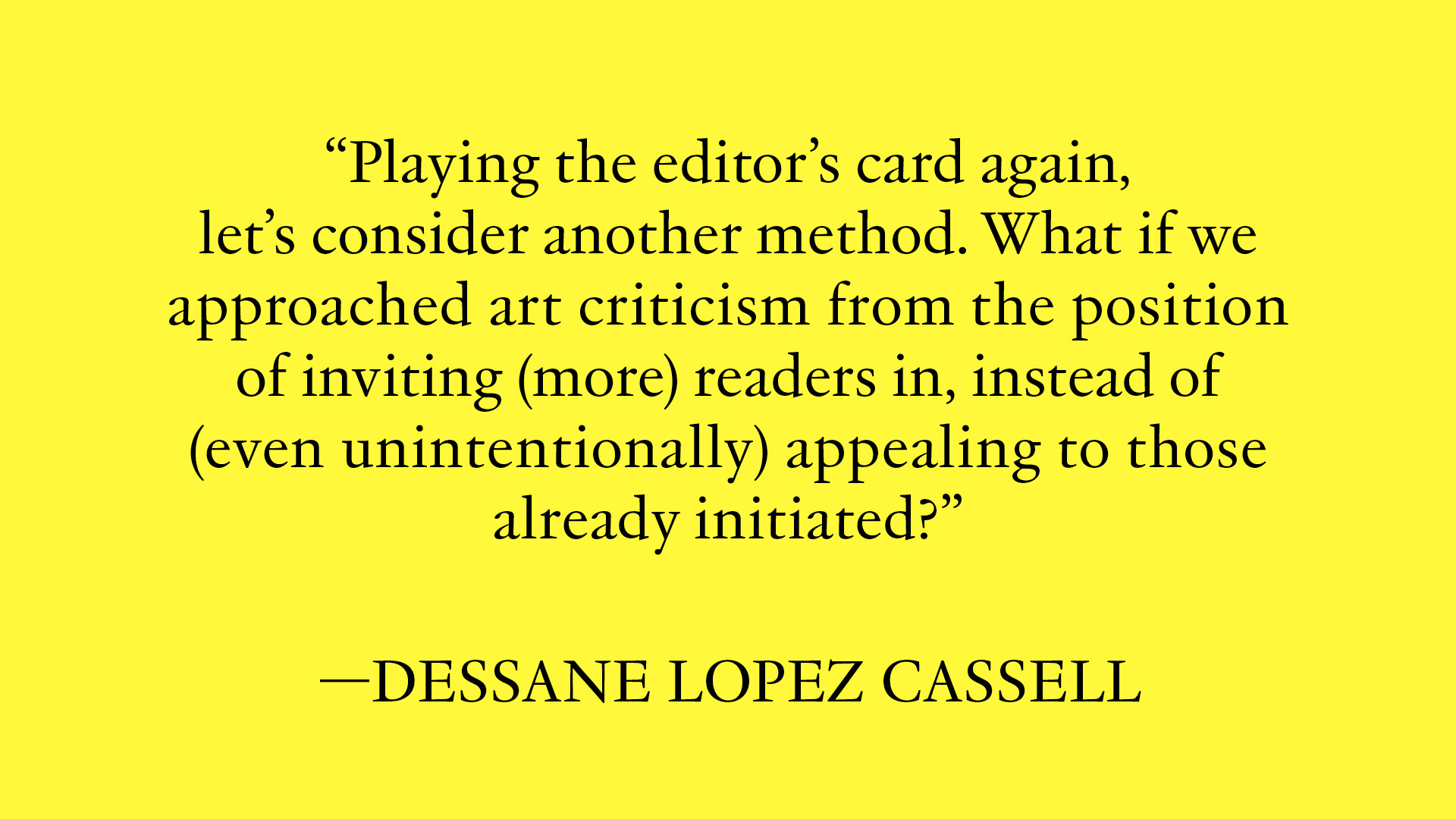Get Mousse #85 or subscribe
Join our newsletter
In this issue:
A Hypothesis of Resistance: An Essay on Duration
The final essay in Cally Spooner’s series outlines a cartography of performance, challenging the standardizations that drive individual and societal bodies to perform toward an entirely metric-oriented future.
Survey: Donald Rodney
Things Arrive Together as Suffused and Inseparable
Looking for Eldorado: Donald Rodney’s Early Sketchbooks
Jareh Das, Carolyn Lazard, and Robert Leckie connect Donald Rodney’s artistic experimentations to ongoing conversations about the politics of sickness and racialized individuals, the complex interconnections between care and constraint, and how Rodney’s contributions and legacy may reverberate among younger generations of artists. Researcher Janice Cheddie situates the artist’s oft-overlooked sketchbooks in relation to notions of autobiography and British art history.
Fiction: Pareidolia
“Things come apart and things do not come back together. There is no reason and there is no consequence. Or the consequence, rather, is diffuse and at best random, unspecific, unavoidable. . . . A writer’s job is to offer a different reality for your consideration. Every piece of writing is a wager about how things may or may not hold together on the page and off.” An exclusive excerpt from Emily LaBarge’s upcoming novel Dog Days.
Monograph: Fast Fish, Loose Fish
Niloufar Emamifar, in conversation with Dora Budor, speaks about the ongoing exchange between material conditions and interpersonal experiences in her work, and the psychosocial dynamics inherent in built space and property.
Monograph: Performance Society
Ivan Cheng’s total artwork is liberated from the traditional hegemonic stage, wrapping itself in its audience. Mitchell Anderson reflects on a practice where the casual and the rehearsed bleed through one another.
Thinkers: On Susan Stryker and Trans SanFrisco
“I’m looking for some things that today’s trans culture and writing has left behind that we might want back again.” McKenzie Wark on Susan Stryker’s contributions to the para-academic intellectual and cultural world of Trans SanFrisco.
Reprint: The War of Desire and Technology at the Close of the Mechanical Age
David Joselit selects a 1995 text by Allucquère Rosanne “Sandy” Stone, a founding figure of transgender studies. As an early theorization of the internet, it anticipates our current moment of social media exhibitionism in ways that have gone largely unacknowledged.
Curators: Manifesto on Neighborly Dislike as Curatorial Critique
“Exhibitions are spun-out assemblages that curators seek to tame. . . . Items of neighborly dislike are those components within assemblages that do not conform to normative taxonomies, divisions in academic discourse, or consensual aesthetics.” Clémentine Deliss’s thoughts on the art of curating, conveyed through a method she terms “neighborly dislike.”
Criticism: Criticism’s Ends—Platforming Someone Terrible
“That art and its criticisms are inconsequential is just something we tell ourselves, a gift that keeps on giving.” Invited by guest editor Kerstin Stakemeier, MYSTI on the consequences of never allowing ourselves to (publicly) ignore reality at large in favor of identifying a manageable slice of it as our fulfilling sphere of (privatized) influence.
Tidbits
Suneil Sanzgiri by Harry Burke; Theodora Skipitares by Felix Bernstein; Noor Abed by Amy Jones; Adriana Ramić by Melanie Bühler; Ang Ziqi Zhang by Moritz Scheper.
Visual: Map Pointz, 2015–ongoing
“The archives are energetically charged. They’re like relics. There’s something very intimate about the staged, found images, the vernaculars.” A visual essay by Guadalupe Rosales, featuring an interview between the artist and Rita Gonzalez.
Opinions: Just When the Caterpillar Thought the World Was Over, It Became a Butterfly (Part I)
In the first of a two-part opinion column, Chus Martínez calls for change in the dynamics of contemporary art’s institutional structures, unfolding the potential of art to address personal interaction, mental health, and the importance of sheltering collectively.

